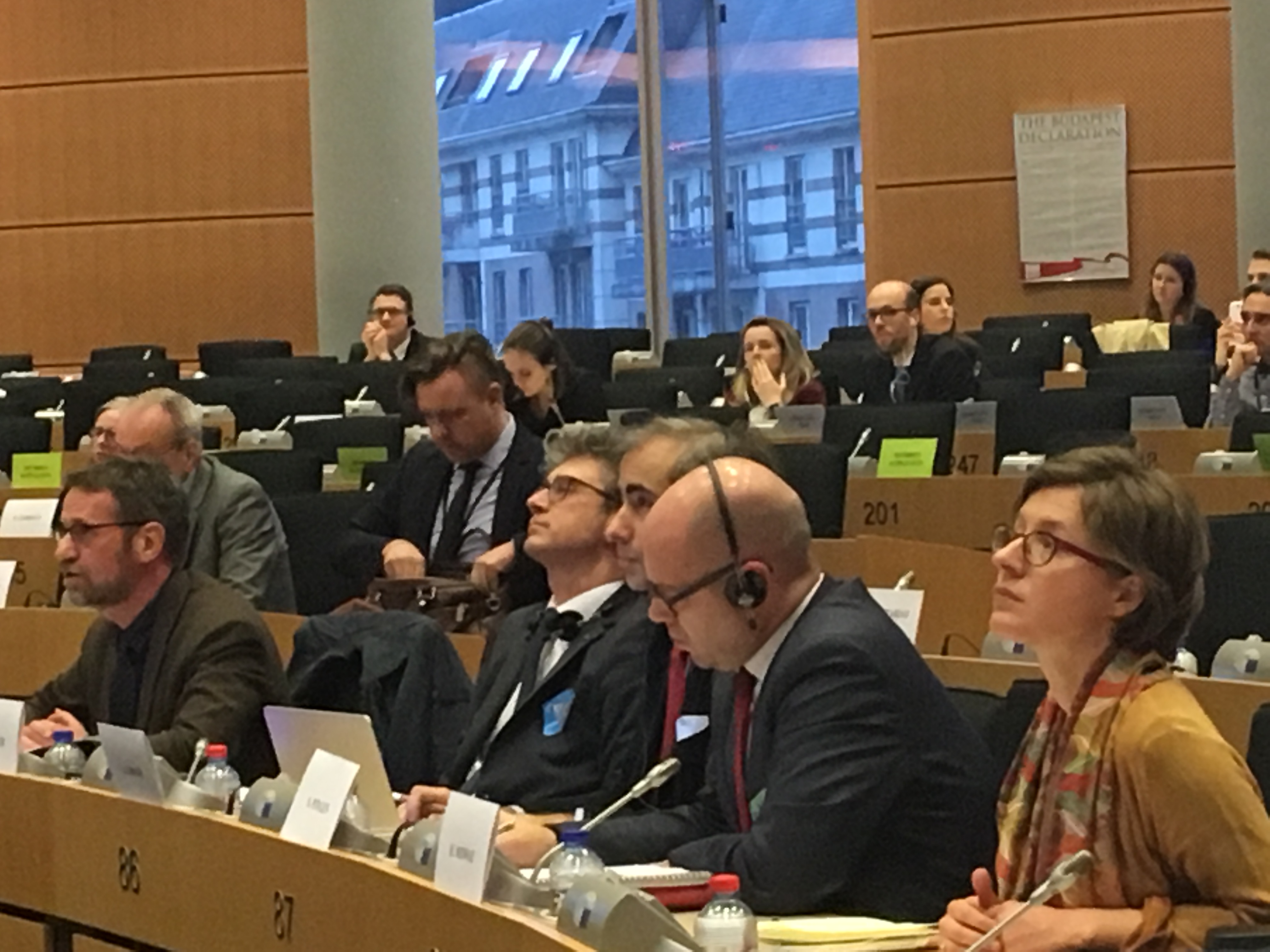
EU Parliament Hearing on the LULUCF
On 30 January 2017, the public hearing on "Meeting the EU’s 2030 emission reduction targets: the role of the land use and forestry sectors (LULUCF)” has officially launched the work of the EU Parliament ENVI Committee on the EU Commission Proposal for a Regulation proposal on the inclusion of greenhouse gas emissions and removals from land use, land use change and forestry into the 2030 climate and energy framework and amending Regulation N° 525/2013 on a mechanism for monitoring and reporting greenhouse gas emissions and other information relevant to climate change, presented on 20 July 2017.
The role of harvested wood products in the LULUCF framework was presented by the EOS Member Mr Streiff, Director of the Swiss Timber Industry Association. He highlighted that in order to effectively tackle climate change we must remove carbon from the atmosphere as well as reduce new carbon emissions into the atmosphere: responsibly sourced wood can achieve both of these.
In order to guarantee that the use of wooden products doesn’t negatively affect the high values of the forests in terms of ecosystems, timber should always be produced according the sustainable forest management criteria. Indeed managing forests can result in more climate benefits than just leaving forests minimize soil disturbance and increasing the forest carbon storage. Left entirely to nature, forests will achieve a climax stage. At this point the forest only grows as trees fall due to age, wind, landslip, disease or fire. Furthermore, Mr Streiff recalled that when fossil fuel-based products are replaced by wood we have a double positive effect: energy consumption and GHG emissions from the production processes are reduced; wood products' carbon store increases in the longer term, so more and more carbon is removed from the atmosphere.
Then Mr Streiff introduced the Swiss Federal Act on the Reduction of CO2 Emissions. This Act is intended to reduce greenhouse gas emissions and in particular CO2 emissions that are attributable to the use of fossil fuels (thermal and motor fuels) as energy sources with the aim of contributing to limiting the global rise in temperature to less than 2 degrees Celsius. In particular, there is an obligation for importers of fossil fuels and operators of fossil thermal power plants to compensate for CO2 emissions using domestic measures, including at least 10% of the CO2 emissions caused by traffic until 2020. Reductions in greenhouse gas emissions achieved in emissions-reduction projects and programmes (CO2 compensation projects) in Switzerland can receive attestation and be used to compensate for emissions. The biological CO2 sequestration in wood products is admitted by this system as compensation project meaning a clear recognition of the extended storage effect of timber products. The Swiss Timber Sink (e.g a HWPs pool) is composed of three different reference levels and lines for:
– solid timber and plywood;
– particle board and MDF;
– fibre board (insulating).
The Federal Office for the environment issues attestations for reductions achieved in Switzerland. The attestations may be sold to companies that are required to compensate for their emissions, e.g., such as a fossil fuel thermal power plant or a fuel importer. Attestations are issued and traded in the Emissions Trading Registry and cannot be traded outside Switzerland, moreover, these are reserved to be used exclusively by companies obliged to compensate.
The Swiss system, as reported by Mr Streiff had several positive effects such as stimulating the harvested volume (in 2015 only 56% of the annual increment); encouraged a positive silviculture (37% of growing stock in trees with more than 50cm Ø at breast high) and improved biodiversity; the thinning has reduced darkness in forests.
Finally, in the specific framework of the LULUCF, the presentation given by Mr Streiff was concluded with the following recommendations:
- « The Forest Reference Level should aim to find the highest possible sustainable harvest level for the period 2020-2030 »;
- « Increased use of wood-based products and the substitution benefits should be promoted »;
- « Creation of a separate pool for HWP is necessary and easier to monitor and to manage than a forest pool »;
- « Industries with obligation to compensate can deal with a limited number of timber companies focused on timber processing much easier than with thousands of forest owners of various motivation to do Forest management – or not ».
The first official debate within the EP Members of the ENVI Committee on the EU Commission Proposal for a Regulation on the inclusion of greenhouse gas emissions and removals from land use, land use change and forestry into the 2030 climate and energy frameworkhe is expected during the next Committee meeting that will be held on Monday 27 and Tuesday 28 February 2017.
From left to Right: Mr Streiff and the other speakers of the hearing.
Related Posts
Contact
EUROPEAN ORGANISATION
OF THE SAWMILL INDUSTRY AISBL
Rue Montoyer 24/box 20
BE-1000 Brussels
Tel.: +32 2 287 08 68
Email: info@eos-oes.eu


